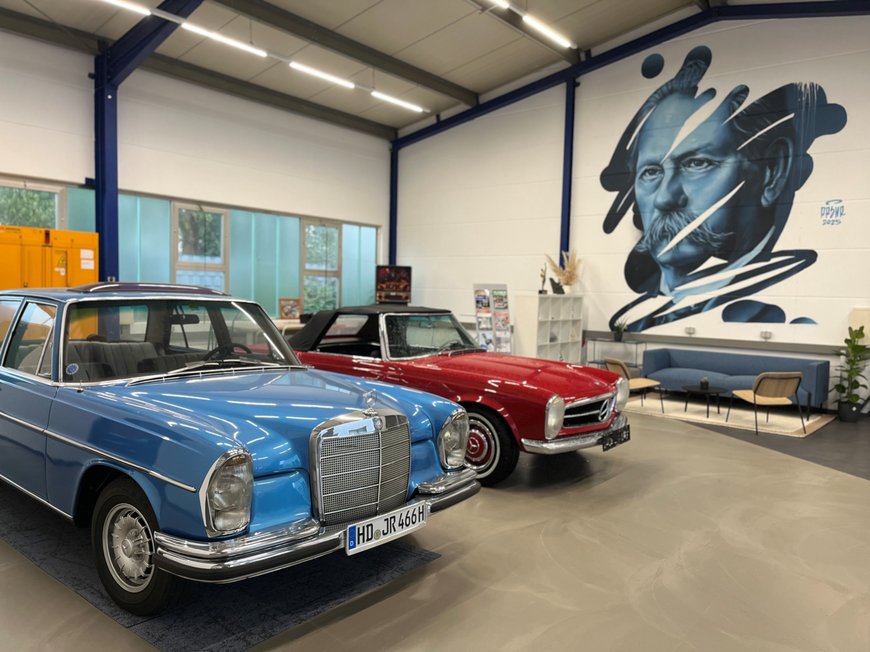Since the beginning of the 20th century, adhesives have been changing automotive manufacturing and maintenance. They have become an indispensable bonding technology.
Thanks to them, modern motor vehicles are lighter, safer, and more sustainable on roads, off-road, and on racetracks.
Around 20 kg of adhesive can be found in a modern car. These include polyurethane adhesives, SMP adhesives, silicones, epoxy resins, anaerobic adhesives, UV-curing adhesives, pressure-sensitive adhesives, and others.
They are the invisible heroes that work behind the scenes to ensure greater safety, more comfort, and a functional infotainment system.
Unlike welding, riveting, and screwing, bonded joints do not cause stress peaks on the joined parts, provided they are designed correctly. Bonded windows give the car body additional stability. In the event of an accident, bonded safety-relevant components retain their structure and protect the driver from being trapped by excessively deformed components.
With a wide range of applications in vehicle construction, choosing the right adhesive is no easy task.
Special requirements, such as heat resistance for high temperatures that arise during the drying of the paintwork, require a high level of technical expertise.
Adhesive knowledge for the proper use of adhesives is taught in the DVS courses DVS®/EWF Adhesive Practitioner and DVS®/EWF Adhesive Specialist, among others. These have been conducted by Innotech in cooperation with Fraunhofer IFAM since 2017 at the Heidelberg (HEI) site in southern Germany. Since mid-2025, the training courses have been held at the new, state-of-the-art training center in Mühlhausen. Companies and skilled workers benefit from expanded capacities, practice-oriented training, and unique presentation opportunities.
Bonding is a key technology in modern E-mobility
The individual battery cells and their housings in electric cars are bonded together with adhesives. Here, they provide the necessary stability and strength while remaining elastic. Thanks to this elasticity, the expansion of the battery due to high temperatures during charging is not a problem. It is also protected from overheating during charging by adhesive, which acts as a gap filler. Electric car batteries can weigh between 250 kg and 700 kg, but weight savings thanks to adhesive bonds can compensate for some of this heavy weight. This increases range and sustainability.
Modern joining technologies enable innovative repair applications
Adhesives also play a major role in the maintenance and repair of motor vehicles. Whether installing a replacement body part or repairing lithium-ion batteries, adhesives provide a quick and durable solution. “Cold” joining has long been the norm and saves time in bodywork and paint shops, as the structure and corrosion protection are retained. It also enables the use of mixed materials, opening up a myriad of new manufacturing possibilities.
“The whole world of bonding” is (auto)mobile
For a few weeks now, an impressive mural by Carl Benz has adorned the wall of our lounge in the service center in Rettigheim. This is not a traditional painting, but was sprayed as graffiti by the artist prsnr_art from Heidelberg using spray cans. Would you have guessed that? The two vintage Mercedes cars are a real eye-catcher for customers and employees alike. Every day, they remind us of the long history between adhesive bonding technology and automobile manufacturing and point out that “The future sticks – even in mobility.”
Frequently Asked Questions (FAQ)
Question:How much adhesive is used in a modern car?
Answer: A modern car contains around 20 kg of adhesive – including polyurethane adhesives, SMP adhesives, silicones, epoxy resins, anaerobic adhesives, UV-curing adhesives, pressure-sensitive adhesives, and others.
Question:What advantages do bonded joints have compared to welding or screwing?
Answer: Bonded joints do not create stress peaks, increase the stability of the car body, and contribute to safety in the event of an accident by reducing deformation.
Question:What is the story behind the mural in the Innotech Service Center?
Answer:A large mural of Carl Benz, sprayed by the Heidelberg artist prsnr_art (Aaron Diesbach), recalls the close connection between adhesive technology and automotive history – and reminds us that 'The future sticks – even in mobility.'
Question:Why is choosing the right adhesive in vehicle construction challenging?
Answer: Due to special requirements – such as heat resistance during paint curing – extensive technical know-how is needed to select the appropriate adhesive.
Question:Where is solid knowledge on the proper use of adhesives taught?
Answer: In the DVS®/EWF courses “Adhesive Bonder” (EAB) and “Adhesive Specialist” (EAS), which are conducted by Innotech in cooperation with Fraunhofer IFAM; starting in 2025 at the new training center in Mühlhausen.
